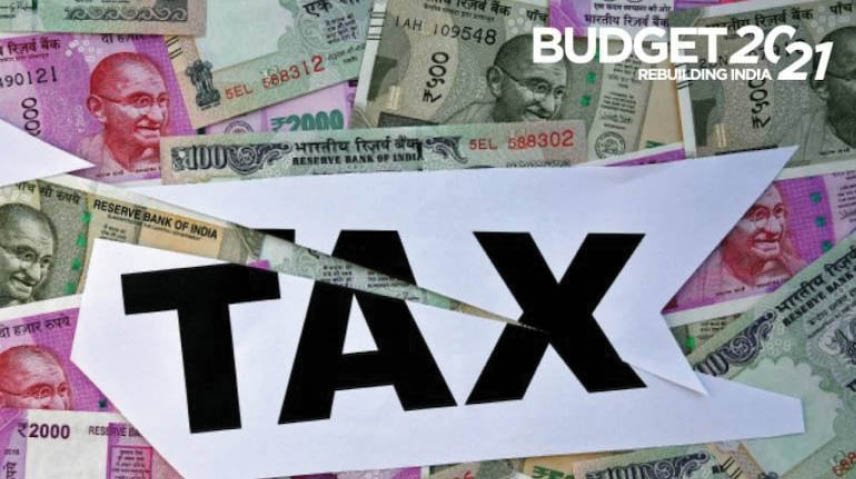Marzee Kerawala is a Certified Financial Planner with expertise in Income Tax and Investment products. Managing assets worth over Rs. 4 Billion, his firm ‘NiveshIndia’, designs Tailored Investment Strategy through Customised Financial Planning for individuals and NRIs, and also handles Treasury Management for corporates and SMEs. You can contact him at +91 9987567667 or Email: marzeek@niveshindia.co.in [Website is www.niveshindia.in]
.
I had earlier highlighted the key changes proposed by the Union Budget 2021 its impact on various employees, investors, tax-payers and consumers. A significant change the budget proposed was taxing the interest on PF contribution (by employees) above Rs. 2,50,000/- as per the employee’s marginal rate. This signifies curtains down for the EEE tax status enjoyed by PF till date, which has ruffled many employees with high salaries, who were using the Voluntary Provident Fund for investing in PF and earning tax-free interest. Since then, I’ve received many queries as regards the impact of this new rule and possible solutions, if any.
 But before that, let me explain the basics of how it all works. Salaried employees contribute to their Employee Provident Fund (EPF) 12% of their basic salary. The employer, additionally, makes a matching contribution to his/her provident fund account. The money deposited in the PF account earns a specified interest rate, set by the Government, and is subject to changes.
But before that, let me explain the basics of how it all works. Salaried employees contribute to their Employee Provident Fund (EPF) 12% of their basic salary. The employer, additionally, makes a matching contribution to his/her provident fund account. The money deposited in the PF account earns a specified interest rate, set by the Government, and is subject to changes.
Currently, the interest rate on PF is 8.5% and whatever amount of interest earned on the balance amount in PF is completely tax free. Above the mandatory contribution in EPF, an employee also has an option to contribute excess amount in Voluntary Provident Fund (VPF). The difference being EPF is mandatory, whereas VPF is voluntary. One can make even up to 100% of his basic salary and DA to VPF account. Main advantages which attracts employees towards VPF contributions, is that till date it enjoyed the EEE tax status. It simply means it is Tax Exempt thrice: First – when you contribute, it qualifies for tax saving u/s 80C; Second – the interest earned yearly is also Tax exempt; and Third – the maturity proceeds at the time of retirement is also tax exempt. Also, it’s the highest interest-bearing fixed income investment, which is under Central Government, and hence enjoys status of sovereign guarantee.
.
Who will be impacted by this tax change?
If your EPF and VPF contributions exceed Rs. 2.5 lakhs per annum, then interest on the excess contribution will be taxed as per your tax rate. Let us assume that your basic salary is 50% of your CTC (cost to company) and that you aren’t making any VPF contribution. If your total annual compensation is Rs 40 lakhs, then your basic pay will be Rs 20 lakhs (50% of 40L). Your annual EPF contribution will be 12% of Rs 20 lakhs, i.e. Rs 2.40 lakhs which does not exceed the limit on taxable interest.
Therefore, if your total compensation is less than Rs 40 lakhs, then you will not be impacted by this tax change. Please note that we have taken an assumption of basic salary being 50% of total compensation. In most HNI clients, it can be as high as 75% -80% of the CTC also. In the above example, we assumed that you are not making any VPF contributions. However, there are many salaried investors whose EPF contributions do not exceed Rs 2.5 lakhs, but together with VPF contributions, may exceed the Rs 2.5 lakhs limit. Many investors make substantial VPF contributions to earn high rate of tax-free interest. By putting a cap of Rs 2.5L on the contribution, this government has effectively brought HNIs under the tax net. Anyone with less than 21L as basic salary, not contributing to VPF can still go scot free. If you make substantial VPF contributions, you should check your PF statements and how much VPF contribution you make or plan to make, to know whether you will be impacted by this tax change.
.
Understanding The Impact:
The current EPF / VPF interest rate is 8.5%. If your annual EPF / VPF contribution is Rs. 6 lakhs, then interest on Rs. 3.50,000 (excess over the limit set by the Government) will be taxable. The annual interest @ 8.5% on Rs. 3,50,000 excess contribution will be Rs. 29,750 (8.5% of Rs 3.5L). Assuming you’re in the 30% tax bracket, your annual income tax on PF interest income will be Rs. 8,925. If the annual income is 10L-50L post tax, returns from PF will now reduce to 5.85%. It will keep reducing as the income increases and surcharge is levied on the rate rates. Over the years, your tax liability on PF interest will increase because your EPF contribution will increase, in line with your increment in your basic salary.
.
The Way Out:
Continue to contribute towards PF till the contribution reaches 2.5L. Once you have crossed this threshold, explore other options like PPF (if you haven’t opened it as yet) or SSY (Sukanya Samriddhi Yojana, for those having a girl child) or SIP in Debt funds, which are more tax efficient.
- Myths And Facts About Therapy - 18 June2022
- Nominee V/s Legal Heir: Who Wins? - 18 September2021
- Importance Of Successive Nomination During The Pandemic - 19 June2021
